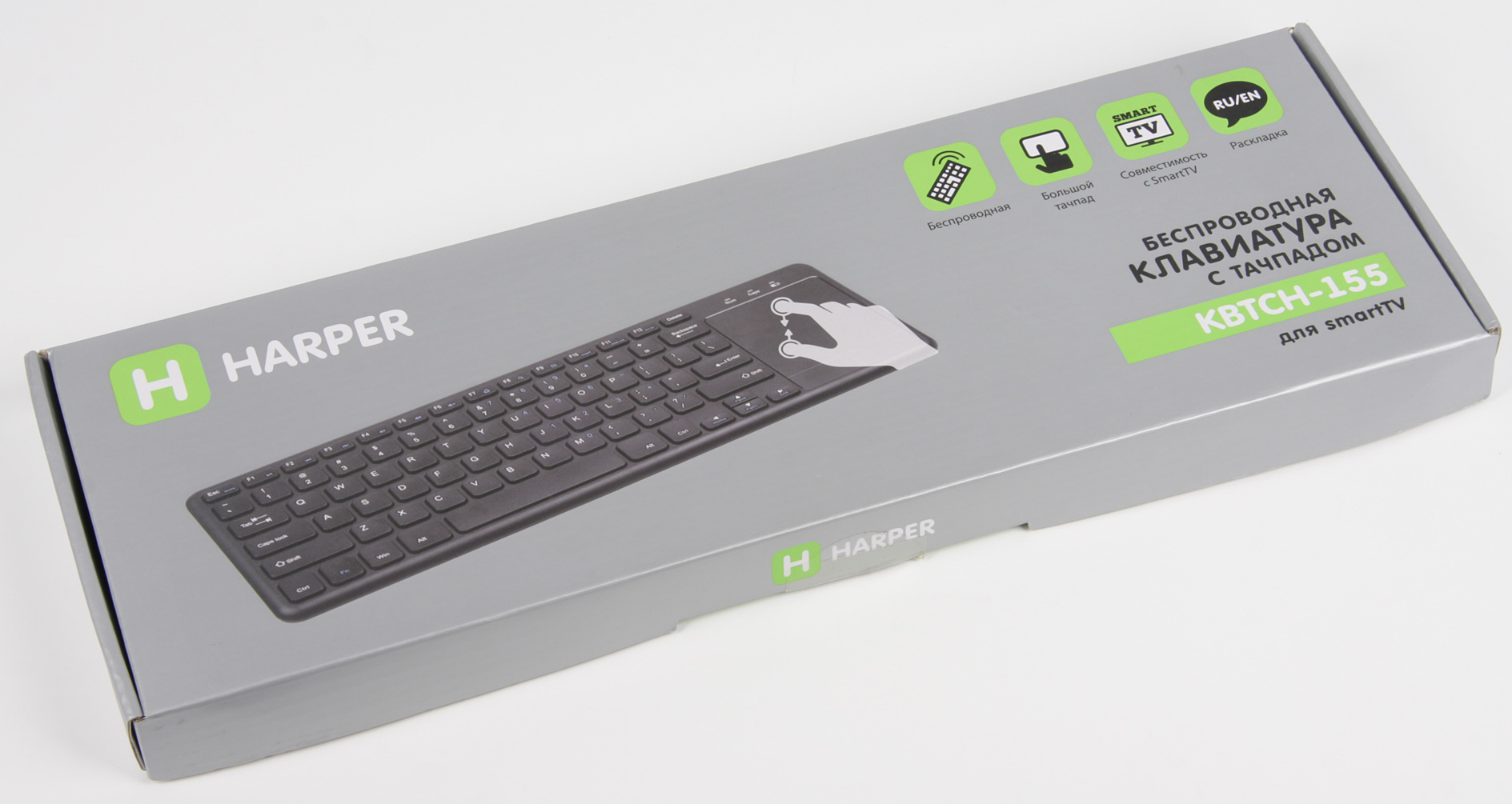The Harper KBTCH-155 keyboard comes packaged in a compact corrugated cardboard box. The front showcases the product and highlights its features, while the back provides key specifications and details of what’s included.
The keyboard is made from matte black plastic, both the body and keys share this finish. Our measurements show the keyboard is 367 mm in length, 121 mm in depth, with a maximum height of 20 mm from the desk to the keys.
The wedge-shaped body starts at 9.5 mm in height at the front and increases to 17 mm at the back, giving the keyboard a slight tilt when placed on a flat surface. Four rubber feet on the bottom prevent unnecessary sliding during use.
Although there’s no height adjustment, the keyboard’s low profile makes such a feature unnecessary. When resting your wrists on the desk, your fingers can easily reach even the furthest function keys without any strain.
Weighing only 277 grams, the keyboard is lightweight and portable. Its rounded edges and tapered transition from the top to the bottom make it easy to hold in one hand while typing with the other.
Most of the keys are standard size, similar to a full-sized keyboard, making the transition to this model effortless. Specifically, the alphanumeric keys measure 16×15 mm, with 3 mm spacing between them. The top row and arrow keys are reduced in height to 9 mm. The keys rise about 2 mm above the body surface.
The Harper KBTCH-155 uses a membrane switch mechanism. The key travel is 2 mm, which means they sit flush with the surface when fully pressed. The actuation force is around 65 grams. At the start of the press, there’s notable resistance that diminishes halfway through the keypress, resulting in a clear tactile feedback. However, long keys may not register if pressed on the edges, so it’s best to press them near the center. Light tapping on the keys produces a slight rattle, more pronounced with longer keys. The actual sound of key activation is relatively quiet.
The keyboard features a compact layout, with some standard key functions accessible by holding the “Fn” key. There’s no dedicated numeric pad, but the right side of the keyboard can act as one in Num Lock mode, though it’s hard to imagine many needing this. The “Fn” key also grants multimedia functions, though oddly, volume increases with F4 and decreases with F5, which feels counterintuitive.
Primary key functions are marked with large, clear white characters, while secondary functions are in pale blue and harder to see due to their smaller size. Both Latin and Cyrillic letters use a clean, sans-serif font that’s easy to read. There’s no difficulty distinguishing between Latin and Cyrillic letters.
Three LED indicators are located above the touchpad on the right. The Num and Caps Lock indicators are dim blue and either off or constantly lit. The rightmost red indicator shows the connection status to the USB receiver or low battery.
The touchpad area measures 75 mm in width and 90 mm in height. Its matte, slightly textured surface allows for accurate control. The bottom part of the touchpad responds to presses, acting as left and right mouse buttons. The tactile feedback is clear, and the click sound is noticeable. The active touch area is roughly 65×65 mm. A light tap simulates a left-click, and two-finger scrolling works both vertically and horizontally, with pinch-to-zoom also supported. However, there’s a slight delay between touchpad movement and cursor response, which can be frustrating and slow down productivity.
Operating on a 2.4 GHz wireless connection, the keyboard uses a small USB receiver that can be stored in a slot within the battery compartment, which requires two AAA batteries.
If unused, the keyboard enters sleep mode after a few minutes. In this state, the touchpad and LED indicators turn off. Pressing any key wakes it up, and the pressed key is sent as usual. A mechanical power switch helps save battery life and prevent accidental keypresses when not in use.
Testing showed the keyboard works at distances of up to 9 meters from the receiver. It was successfully tested with a personal computer and a modern Samsung Q7C series smart TV.
Conclusion
The Harper KBTCH-155 keyboard is suitable for everyday computer use or remote control of a media center on a PC or smart TV. The built-in touchpad is a convenient auxiliary input device, though for more precise mouse work, an external device is preferable. The compact size, light weight, standard key sizes, comfortable tactile feedback, and reliable 9-meter range are all advantages. However, closely spaced up/down arrow keys, noticeable touchpad delay, and inconsistent key actuation on longer keys are minor drawbacks.

Leave a Reply